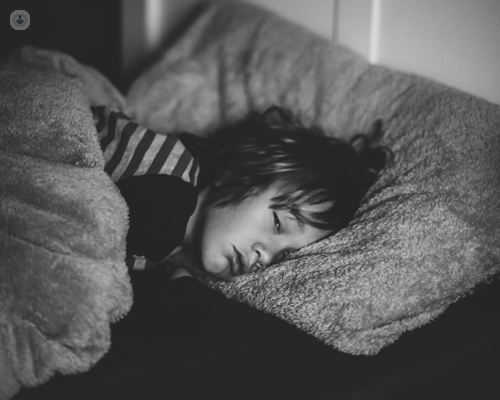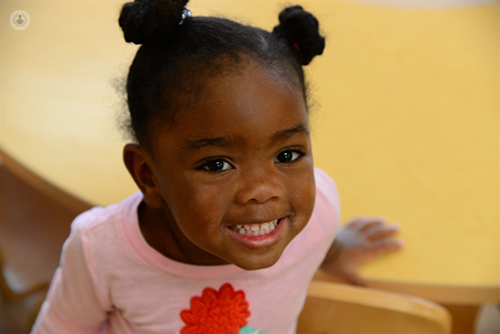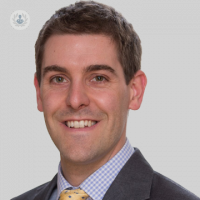Febrile seizures
Mr Christopher Pepper - Paediatric otolaryngology
Created on: 12-28-2015
Updated on: 10-13-2023
Edited by: Karolyn Judge
What are febrile seizures?
Febrile seizures are seizures that occur in children who have a fever. They usually occur in children between the age of 9 months and 5 years.
What are the symptoms of febrile seizures?
Febrile convulsions usually last between a few seconds and 10 minutes, and are often followed by a short period of confusion or drowsiness. The most common sign which presents is that the child's eyes roll back and their legs become rigid. Any of these symptoms can also present:
- Sudden contraction of the muscles
- Falling (if standing)
- Crying or moaning
- Vomiting or tongue biting
- Shaking rhythmically
- Urinating involuntary
- Not responding to your voice
Are febrile seizures serious?
Febrile seizures are usually harmless. They only last a few minutes and typically, they don't indicate serious health issues.
However, if the seizure lasts more than 15 minutes, occurs in only one part of the body or happens more than once when the child has an illness, it isn't considered a normal febrile seizure.
What are the causes of febrile seizures?
Febrile seizures are usually inherited, and occur at temperatures of 38°C or higher, usually related to a viral illness or a cold.
What is the treatment for febrile seizures?
Measures to control febrile seizures
The treatment is mainly based on controlling the situation, so it's recommended to follow the following measures:
- Not containing the child’s convulsive movements
- Not leaving the child alone
- Moving the child away from furniture and any sharp objects
- Putting some protection under the child if the floor is hard
- Not moving the child, unless they are in a dangerous place
- Loosening any tight-fitting garments (especially on the neck)
- Placing the child on their side (if vomiting or accumulating saliva)
- Not putting anything their mouth, to avoid tongue biting
- If the seizure lasts more than 15 minutes, call an ambulance

What happens after a febrile seizure?
While the fever may continue for some time, most febrile seizures stop without treatment. They usually don't cause other health issues but some children may feel sleepy after a febrile seizure.
At what age do febrile seizures stop?
Febrile seizures usually stop around age five, and most children outgrow them. Only a small amount have more than three febrile seizures in their lifetime.

